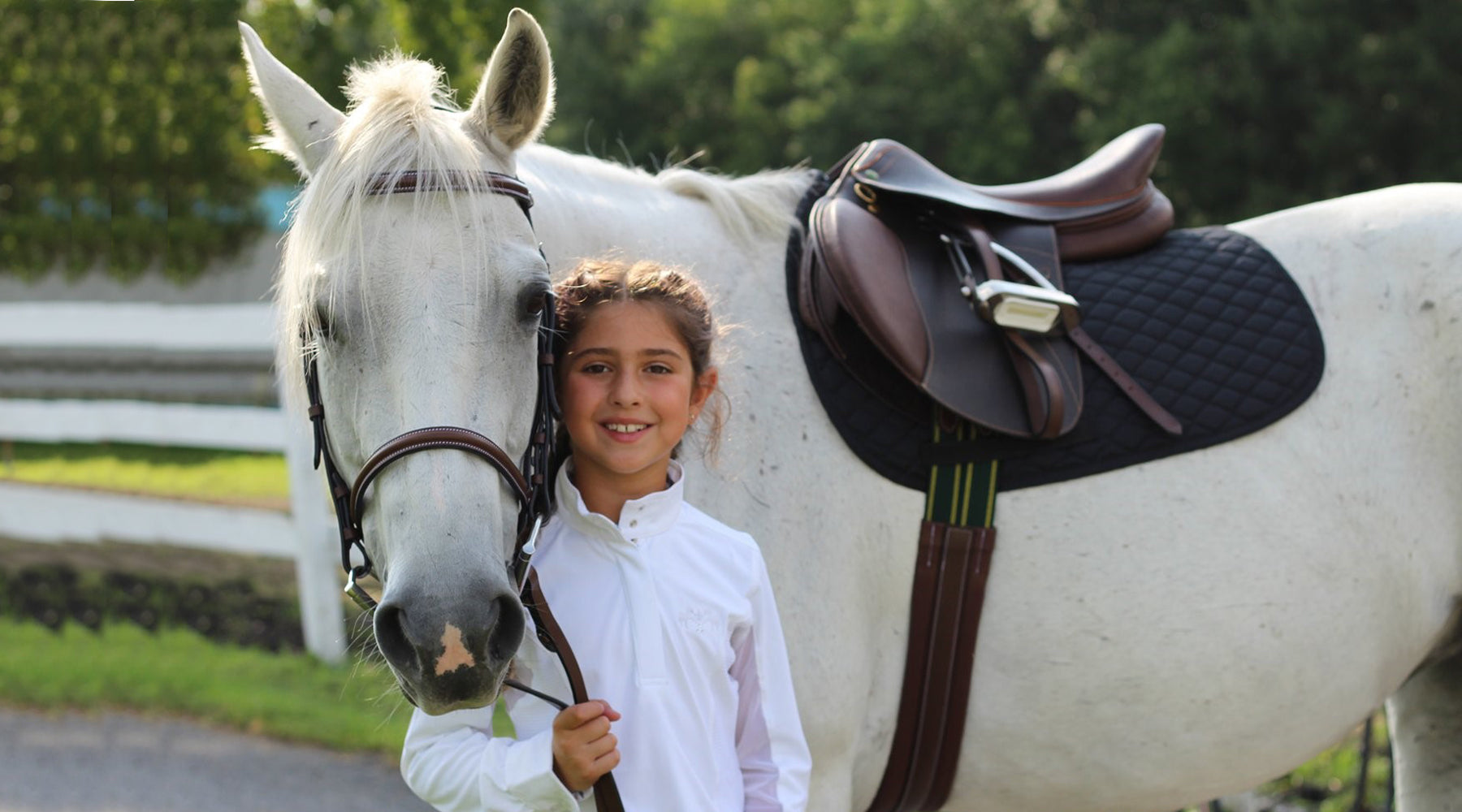Learning all of the different tack pieces is one of the first things that new equestrians learn. The basic parts as most of us know are the bridle, girth, horse halter, saddle pad and arguably the most important piece of tack: the saddle.
Those who have been saddle shopping have come to learn that there is an overwhelming amount to learn about saddles from function, fitting the horse, fitting the rider to leather types to brands and their specific qualities.

There should be a PhD in saddlery!!
Learning the different types of saddles and their purposes is a great place to begin the search!
The Difference between English saddle and western saddle
Starting at the differences between an English saddle and a western saddle is commonplace for beginner riders. Both the English and western saddle has a designated seat, leg flaps, cantle, pommel, skirt and a structural tree.
The differences are quite obvious, but mainly the English saddle is meant for jumping, the hunt and any other activity that requires a light/half seat. On the contrary, a western saddle is built for long days, ranch work, and gaming.
The history and development of the English saddle is a long journey. There were many different versions that existed throughout history, all which have seen many upgrades since, but the main purpose of every English saddle remains the same: the ability to have a forward seat.
What is the use of Horse saddles?
The function directly correlates to structure and form in saddlery. We will be exploring the unique characteristics of the all-purpose saddle, dressage and the close contact saddle as well as a few unique types.
Starting with what is probably the most popular, especially in lesson barns: the all-purpose saddle (A/P saddle). The all-purpose saddle is the most versatile out of all of the English saddles. A/Ps feature a slightly forward flap; this is appropriate for short stirrup work such as jumping. Although, the flap is not so forward that flatwork with slightly longer stirrups is not uncomfortable for the rider. The seat is comfortable for the rider and is a safe middle ground between a shallow jump saddle and a deep dressage saddle.
These trusty saddles are great for those looking to dabble in several disciplines! A great option for a rider’s first saddle is Henri de Rivel Advantage All Purpose Saddle. With a slightly forward flap and moderate seat depth, this saddle is a great fit for riders seeking to try out several disciplines at the lower levels. These are usually the most inexpensive out of the 3 main types.
Dressage is a specific branch of English riding that focuses on principles from hundreds of years ago that are still relevant today. A deep seat and long flaps able to accommodate a longer stirrup length are both requirements of a dressage saddle. Long flaps are needed for the rider to have a deep, contacting seat as well as a relaxed, long leg that is capable of forward and backward movement for various cues.
Why Henri De Rivel Saddles could be the best choice for you?
Henri de Rivel offers a line of dressage saddles, including the Dortmund Dressage Saddle. Large knee rolls and grippy leather are made for the rider to maintain leg position. A medium-deep seat provides a close feel to the horse’s back, enhancing the connection between horse and rider.
Close contact saddles are made for jumping. Henri de Rivel offers a line of close contact saddles that come with unique signature stitching. The close contact English saddles feature a forward flap that accommodates a higher knee placement from a shorter stirrup length. Jumping requires the rider to have a higher and more forward center of gravity. Close contact seats generally have a more shallow seat than a dressage saddle or an all-purpose saddle in order for the rider to easily stand up for the correct half seat position over the fence. One will see these in the jumper ring, hunter/jumper ring and in eventing.
The Henri de Rivel Equipe Close Contact Saddle features all of the important aspects that a true close contact should have. Riders will be well equipped to enter the jumper ring with the Equipe Close Contact Saddle.
There are also a few other saddles that can be placed under the umbrella of “English saddles”. Small children who enter leadline classes with handlers and side walkers will need a leadline saddle, such as the Leadline Saddle by Henri de Rivel. These are specially designed for youngsters to have a comfortable experience with cushioned leather and a suede seat. A grab strap is also attached for added safety.

These saddles resemble English all-purpose saddle, but lack in structure mainly only to serve as a cushion for a young equestrian in those overly adorable leadline classes at Devon (WARNING: CUTENESS OVERLOAD). Exercise saddles used in thoroughbred racing could also be classified under the “English saddle” umbrella. Thoroughbred exercisers are required to stay in a tall 2-point position when traveling at high speeds, so Henri de Rivel Exercise Saddles (right) are the most ideal saddles for you!





